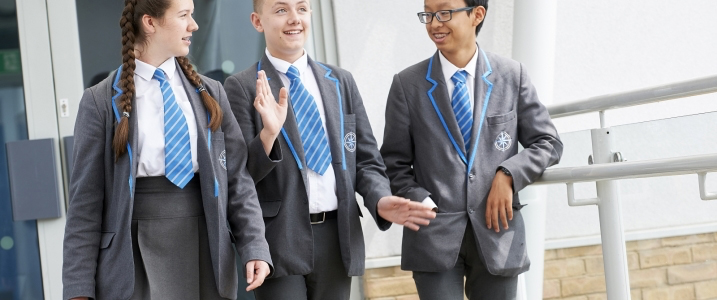
First posted on 3 January 2020
As the turn of the decade sees the return of the #10yearchallenge, Jade Sewell, Mathematics Mastery’s Head of Strategic Partnerships, asks how far we’ve come in the ‘teenie’ years towards understanding how to close the disadvantage gap.
Social media shows lots of us casting back across our profiles to 2010 to compare what we looked like at the start of the decade with what we look like now. If you could find a snapshot of schools in 2010, I wonder how it would compare to a snapshot of schools now, particularly with the introduction of Pupil Premium funding nine years ago.
Looking back, how much starker of a contrast of attainment between children from disadvantaged backgrounds and other children would there be? Indeed, perhaps this change has been caught on social media by photos of very different types of results days in 2010 to those taken in 2019.
What role has Pupil Premium funding had?
Giving schools pockets of additional money is unlikely to result in meaningful quick wins but after nine years we should hope that there are some clear-cut winning strategies emerging for schools and a narrowing of that disadvantage gap.
A report that was published by the DfE in 2015 found that on average schools are using a large number of strategies (18 per school) in order to raise attainment of disadvantaged pupils, with the most popular and effective focusing on teaching and learning.
It strikes me that 18 is quite a lot of strategies to be implementing and having so many must make it hard to know for sure which is delivering the greatest impact. Thankfully, the report found statistically significant relationships between some key strategies adopted by schools who have been more successful in raising the attainment of their disadvantaged pupils.
How to make the most of pupil premium funding
Successful schools were more likely to be using metacognitive, independent learning and peer learning strategies, designed to help pupils to learn how to learn, by encouraging them to think about their own learning more explicitly.
The report says that leaders in schools who are more successful in raising the attainment of disadvantaged pupils emphasise that there is no single intervention that leads to success.
Rather, more successful schools appear to be implementing their strategies in greater depth and with more attention to detail.
Building blocks for success
By comparing more and less successful schools, the study identified seven key points for success:
1. Promote an ethos of attainment for all pupils, rather than stereotyping disadvantaged pupils as a group with less potential to succeed.
2. Have an individualised approach to addressing barriers to learning and emotional support, at an early stage, rather than providing access to generic support and focusing on pupils nearing their end-of-key-stage assessments.
3. Focus on high quality teaching first rather than bolt-on strategies and activities outside of lessons.
4. Focus on outcomes for individual pupils rather than on providing strategies.
5. Deploy the best staff to support disadvantaged pupils; develop skills and roles of teachers and TAs rather than using additional staff who do not know the pupils well.
6. Make decisions based on data and respond to evidence, using frequent, rather than one-off, assessment and decision points.
7. Have clear, responsive leadership: setting ever higher aspirations and devolving responsibility for raising attainment to all staff, rather than accepting low aspirations and variable performance.
The report highlights that between one- and two-thirds of the variance between schools in disadvantaged pupils’ attainment can be influenced by school intake and circumstances. This still leaves meaningful scope for schools to be intervening to make a difference to their disadvantaged pupils learning and attainment.
I’d love to see the 2015 report updated. I think that would go a long way to helping us understand how well we’ve done on our teenie #10yearchallenge to close the disadvantage gap.
Think long-term and be ambitious
Leaders in more successful schools say it takes around three to five years to see the impact of changes they introduce and that setting a culture of high expectations for all and choosing evidence-based strategies that are tailored to each school are two things that really make a difference.
The DfE agrees and has updated its advice on how schools can make effective use of Pupil Premium funding. Schools should take a long-term approach across a 3-year strategy. The longer-term approach helps schools to plan staff development and teaching practice strategies.
Of course, adoption of our Mathematics Mastery programme is one well-supported way to make meaningful long-term change for disadvantaged students. We can help you promote that ethos of attainment for all pupils, support the quality of your school’s maths teaching and, with suites of tools for formative assessment, help you use data to make impactful interventions for every student.
So, while we consider using a photo filter or two on our own social media profiles to save from any embarrassment when we take the #10yearchallenge; when we look at our schools, I hope we can all take an honest look, congratulate ourselves for success but not try to disguise any blemishes and, instead, focus on where we can all still make improvements and continue building an ever brighter future for all students, regardless of their background.
Related Posts